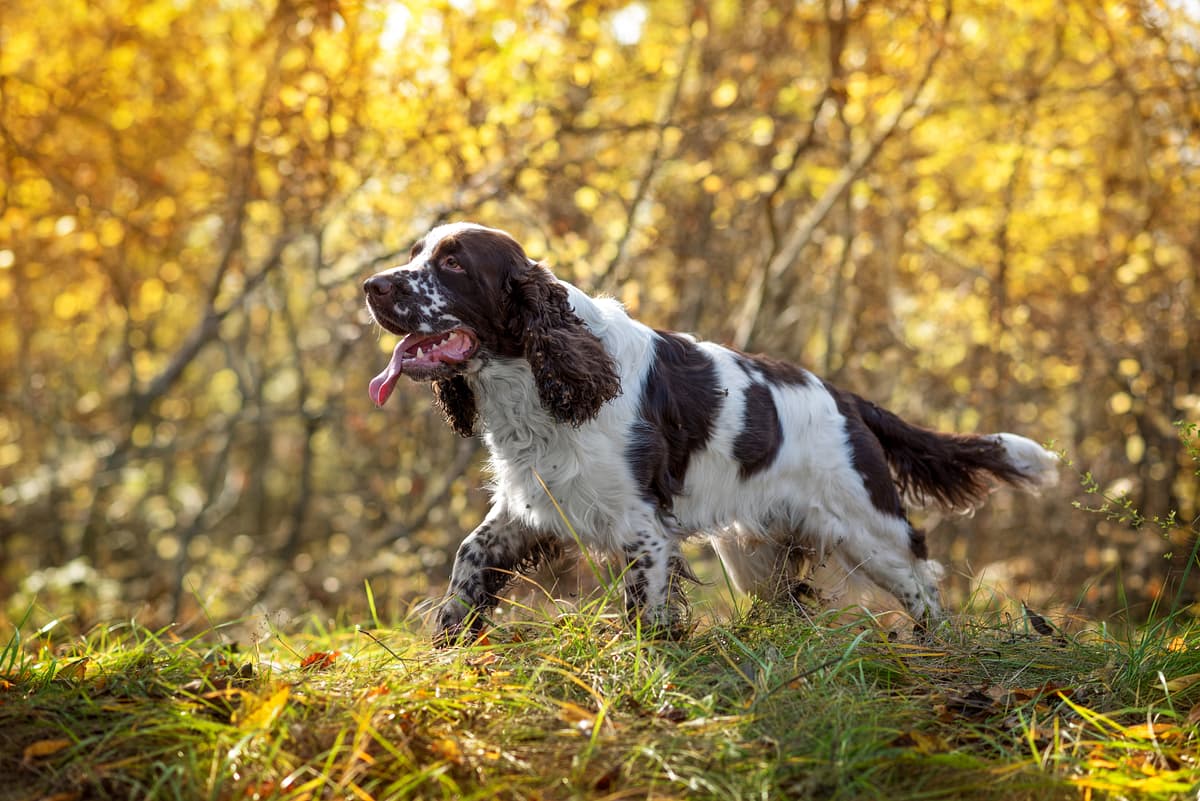English Springer Spaniel vs Labrador Retriever
Discover the differences between English Springer Spaniel and Labrador Retriever to make the best choice for your situation.
Try different breeds

English Springer Spaniel
Energetic, affectionate, and eager to please, this breed thrives on companionship and activity. Renowned for intelligence and versatility, it makes a loving family dog and skilled sporting partner.

Labrador Retriever
Eager, friendly, and intelligent, this breed loves being part of an active family. Their gentle nature and loyalty make them outstanding companions for all ages.
Quick comparison
Medium
20–25 kg
Medium length, feathered
12–14 years
18–23 kg
High energy
Large
29–36 kg
Short double coat, water-resistant
10–12 years
25–32 kg
High energy
Personality & behavior
Compare the personality traits and behavioral characteristics of both breeds.
English Springer Spaniel
Very sociable with people and other dogs
Quick learner, responds well to training
Highly active, needs regular physical activity
Enjoys games and interactive playtime
Adjusts well to various living situations
Labrador Retriever
Warm and sociable with people and animals
Quick learner, responds well to training
High stamina, enjoys active pursuits daily
Loves games and interactive activities
Adjusts easily to new situations and environments
Care needs
Exercise, grooming, and daily care requirements
English Springer Spaniel
Hip dysplasia, ear infections
Labrador Retriever
Hip dysplasia, elbow dysplasia
Suitability
How well each breed fits different living situations and families
English Springer Spaniel
Good option
Intelligent and eager to please, but needs consistent training and exercise
Not ideal
Needs space and regular activity, may become restless in small apartments
Perfect fit
Energetic breed thrives with active owners who can provide daily exercise
Very friendly
Gentle and playful, generally patient with children and enjoys family life
Highly suitable
Social and adaptable, usually gets along well with other pets when socialized early
Prone to anxiety
Dislikes being left alone and may develop separation issues if unattended for long
Labrador Retriever
Great choice
Patient and eager to please, Labradors are manageable for most first-time owners.
Not ideal
Labradors need space and exercise, so apartments can limit their activity needs.
Perfect fit
High energy and stamina make them excellent for active individuals or families.
Highly suitable
Gentle temperament and playful nature make them safe and loving with young children.
Very friendly
Generally sociable and get along well with other dogs and pets.
Prone to anxiety
Extended alone time can lead to boredom and destructive behaviors in this breed.
Breed strengths
What each breed excels at and their best qualities
English Springer Spaniel
- Eager to please and trainable
- Excellent with children and families
- Strong scenting and hunting abilities
- High endurance for outdoor activities
- Friendly and sociable with people
Labrador Retriever
- Friendly and sociable with people and dogs
- Highly trainable and eager to please
- Excellent with children and families
- Strong retrieving and swimming abilities
- Generally adaptable to various living situations
Challenges & considerations
Potential challenges and considerations for each breed
English Springer Spaniel
- Prone to separation anxiety when left alone
- Regular grooming needed for feathered coat
- Can be overly excitable without enough exercise
- May develop ear infections due to floppy ears
- Tendency to chase small animals or birds
Labrador Retriever
- Prone to obesity without portion control
- Can become destructive if under-exercised
- Heavy seasonal shedding requires regular grooming
- May develop hip or elbow dysplasia
- Needs significant daily physical activity
Ready to choose your perfect breed?
Learn more about each breed or compare other breeds to find the perfect match for your lifestyle.
Discover more helpful tools
Make use of our other free tools to get the most out of your pet experience
